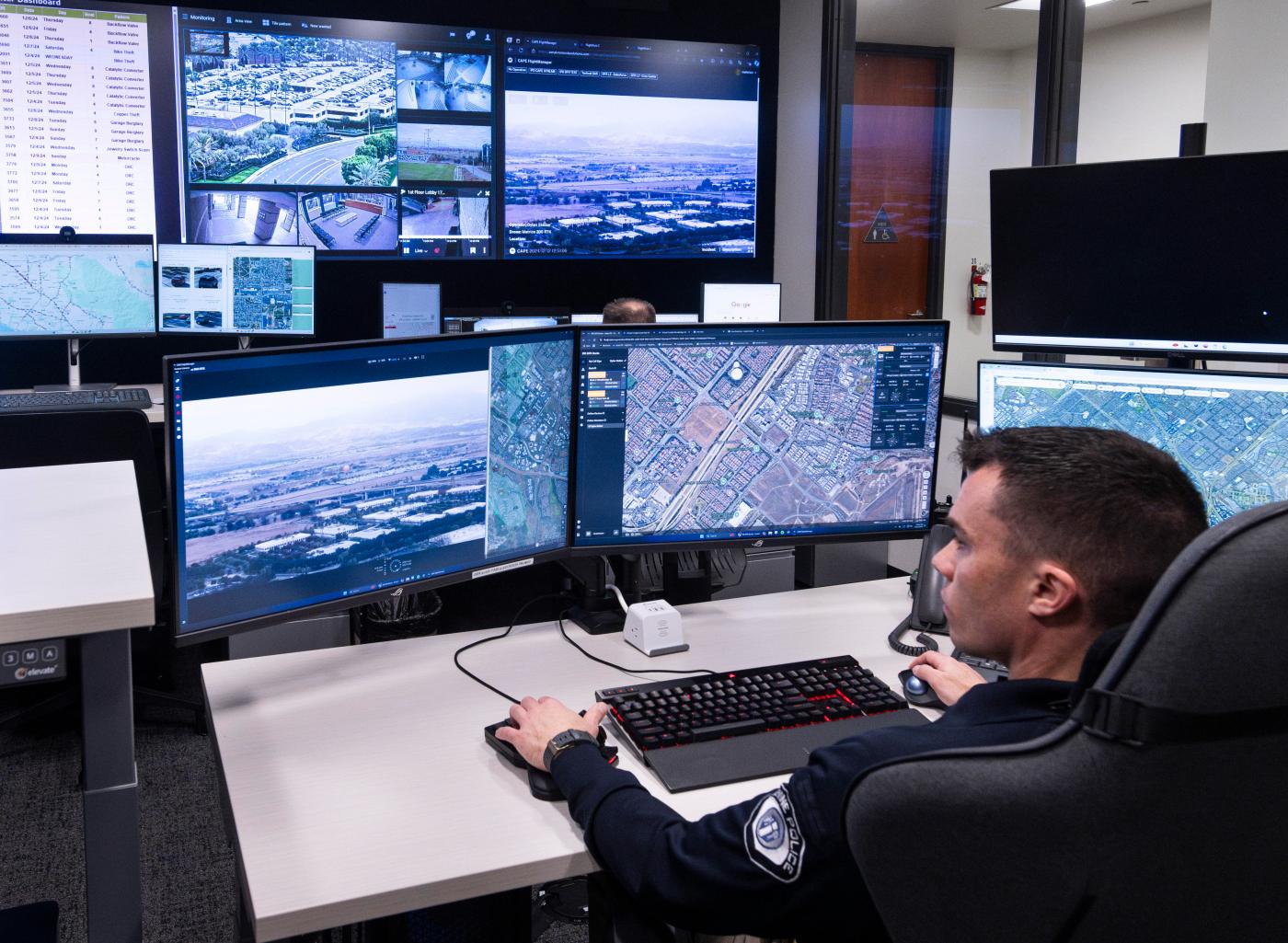Nearly a year after unveiling its Real Time Crime Center, Irvine police say the $2 million technology hub has become a cornerstone of the city’s crime-fighting efforts, assisting officers on thousands of calls and helping drive a double-digit drop in property and violent crime.
The center, housed inside police headquarters, serves as a centralized command post for more than 1,000 camera feeds across Irvine, including police-owned cameras, those from private partners, license plate readers and video from department-operated drones. A team of two crime specialists, a crime analyst and a drone operator monitors incoming calls for service, watches live footage, pulls vehicle plate information and identifies potential suspects while officers are en route.
“We’re going to make it better and better,” department spokesperson Kyle Oldoerp said. “All the goals we hoped for a year ago, we’ve accomplished.”
Since it opened, the RTCC has supplemented officers on more than 4,490 calls for service as of Wednesday, Nov. 12, Oldoerp said.
The new policing resources have aligned with a downturn in crime rates in Irvine as well. So far this year, compared to the same time last year, property crime in Irvine is down 11%, violent crime has fallen 10.45% and residential crime has dropped 16%, according to police data.
Overall clearance rates for 2025 will not be available until the end of the year, Oldoerp said, meaning it’s too early to know how case-closure rates measure up to years prior.
The center itself has also expanded since December. It now features a new technology wall, allowing staff to display higher-quality camera footage, license plate reader data and other real-time information simultaneously as incidents unfold. The cost of updates was included in the original $2 million price tag, Oldoerp said.
Oldoerp pointed to several cases in which RTCC operators played a key role — including a recent stolen-trailer investigation. Using cameras and license plate readers, staff tracked a trailer used to steal high-end electronics and guided officers to the suspect. Police made an arrest and recovered the trailer before the owner even realized it was missing, Oldoerp said.
In another example, license plate readers alerted staff to a known shoplifting suspect in the area, allowing officers to respond more quickly.
Drones remain one of the RTCC’s most effective tools, Oldoerp said. The drone operator can deploy the devices, which are perched on rooftops around the city, to assess an area or locate individuals, relaying that information to officers before they arrive.
Oldoerp expects drone usage to expand as the department further integrates them into day-to-day operations.
Despite the technological upgrades, police say one trend remains consistent: Many offenders come into the city from elsewhere. Since 2023, 71% of people arrested for crimes in Irvine have been non-residents, Oldoerp said.
Even so, the RTCC has helped police stay ahead of crime trends and respond more efficiently citywide.
“It’s an amazing symphony of resources working together,” he said. “I can’t even imagine policing without it.”





